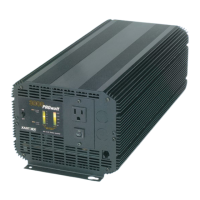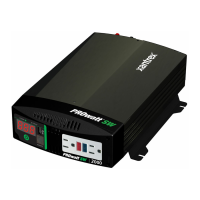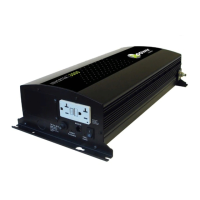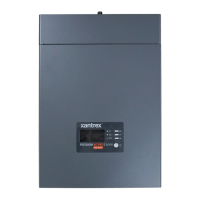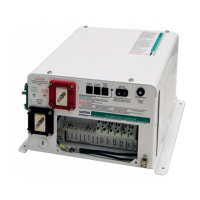APPENDIX C BATTERIES
445-0089-01-01
107
Some systems use the L16 type of battery. These are 6-volt batteries rated at
350Ah and are available from a number of manufacturers. They are 17 inches
(43cm) high and weigh up to 130 pounds (60kg) each—which may be
troublesome in some installations.
Type 8D batteries are available in either cranking or deep-cycle construction.
The deep-cycle versions are 12-volt batteries rated at approximately 200Ah.
Since they are most commonly used to start truck engines, you should make
sure you purchase the deep-cycle version, not the cranking version. Type 4D
batteries are very similar in construction but are somewhat smaller
(approximately 170Ah).
Sealed Gel-Cell
Another type of deep-cycle battery is the sealed gel-cell. The electrolyte is in
the form of a gel rather than a liquid and never requires topping up. Battery
caps are not removable. The sealed construction allows the batteries to be
mounted in any position without spilling. The advantages are no maintenance
(to the battery itself; the system still requires routine maintenance), long life
(800 cycles claimed), and low self-discharge. The disadvantages are high
initial cost and the possibility of damage from overcharging.
While many manufacturers produce quality flooded batteries, only a few
produce suitable gel-cells. Don’t confuse gel batteries with maintenance-free
batteries. The latter are typically standard flooded electrolyte batteries without
caps for adding water, and when the electrolyte gets low, you replace the
battery.
AGM (absorbed glass mat) batteries are similar to gel-cells and deep-cycle
types and can be used in inverter applications.
Environment
For long life and good performance, batteries need to be located in protected,
ventilated enclosures insulated from temperature extremes.
Location
Batteries should be located in an accessible location that allows for access to
the battery caps and terminals. At least twelve to eighteen inches of clearance
above is recommended. They must be located as close as possible to the
inverter•charger to keep the cable run short. However, do not locate the
batteries in the same space as the inverter•charger unless they are of the sealed
gel-cell type.

